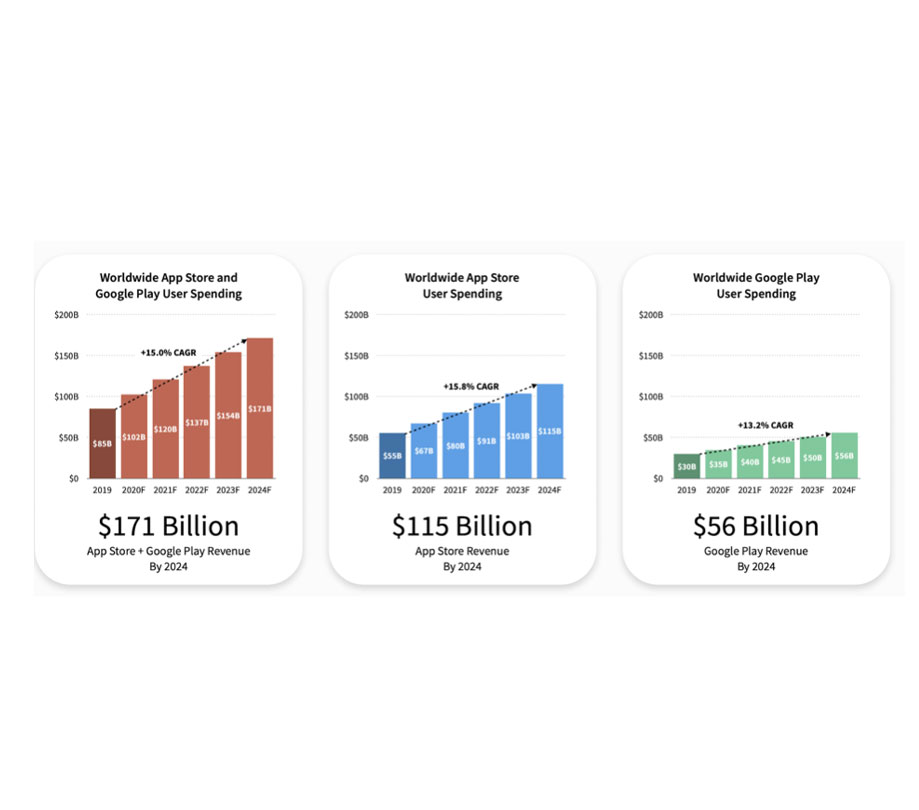Programming
Mobile app development post COVID-19
Thursday, July 2, 2020

|
Alin Turcu |
Alin Turcu, Mobile & AI Community Manager at Cognizant Softvision gives insight to trends during the pandemic and what to expect from future app development post COVID19.
In a very short period of time, the world went from being mobile to being stationary. The majority of individuals, with the exception of front-line workers, have been sheltering at home.
Given the economic hardship facing a slew of industries, and uncertainty the continued uncertainty brought on by COVID-19, it seems reasonable to assume that the mobile app development ecosystem would also be adversely affected.
However, on the contrary, the mobile app development industry has been playing to its strengths, and reinforcing innovations to keep the industry thriving.
A closer look reveals some interesting trends:
Though coronavirus has had an impact on app store revenue, growth remains strong.
The App intelligence firm Sensor Tower published a revised 2020–2024 market forecast , which states that worldwide consumer spending on mobile apps is projected to reach $171 billion by 2024, more than double the $85 billion from 2019.
The forecast also predicts that revenue from non-game mobile apps is expected to surpass that of mobile games for the first time by 2024.

In terms of app downloads, the forecast also predicts a lasting lift from the impact of COVID-19. By 2024, downloads will reach 183.7 billion, up 9% from the earlier forecast that came out before COVID-19, which initially accounted for 7 billion fewer installs.
As every industry grapples with the destructive path of coronavirus, it’s natural to ask if these forecasts are accurate or perhaps too good to be true. While economies are going down and businesses are trying hard to survive and stay afloat - how can one industry be projected for explosive growth?
The Current Climate
Despite a decrease in usage for travel and hospitality apps, according to App Annie people spent 20% more time using apps in the first quarter of 2020 compared to 2019. During that time, consumers also spent over $23 billion in app stores — the largest spend per quarter recorded to date.

Consumers are looking for different ways to manage in the current situation, and in some cases, apps provide the perfect solution.
It’s evident that the obvious winners during this COVID-19 era are apps in industries like remote work/communication, education, social media, and online shopping. Although daily active users of healthcare apps in South East Asia and India are declining, there has been a 110% increase in spending on these apps during the outbreak as the daily active users and downloads exploded in North America, Europe, and the Middle East.
Given the sheer volume of people working remotely, it’s no surprise to see video chat and online conference apps are experiencing explosive growth. In North America, these apps witnessed an astronomical 627% increase in downloads and a 121% increase in daily active users, so it’s safe to say that there’s a critical need for communication apps.
Five Emerging Trends
While some app usage will cool after the lockdown, other industries may continue trending upward long after the pandemic. That said, there are five primary trends influencing the mobile app industry today:
- Chatbots. Service providers had to quickly adapt to the lockdown situation and to new ways of interacting with their customers. Naturally, they all turned to digital. Mobile apps with services such as banking, online shopping, food delivery, and healthcare are working on incorporating chatbots into their apps. They enable consumers to get answers to their frequent questions without having to call customer support and with 62% of consumers interested in interacting with chatbots, along with a potential to save $8 billion for companies, chatbots look like they are here for the long haul.
- Health. The irony is not lost that the very thing spurring the upward trend is health. Apps like Push Doctor, an online medical consultation app, has observed a 70% rise in consultations while Well, an e-telehealth application, has observed a 400% hike in the number of downloads. But online video consultation is not the only area where medical apps will experience growth. There are a large number of gadgets that can measure your heart rate, the way you sleep, your temperature, your weight, etc. all of them connected to smartphones. Kinsa, a company with a smart thermometer, connects to your phone and provides personalized guidance based on age, fever, and symptoms, while aggregating the data in the background - enabling Kinsa to track and predict where illnesses start. These types of apps give the health industry a better chance to mobilize the right resources in the right places at the right times.
- Beacons. Beacon technology is a mobile app development trend that has been completely embraced by museums, hotels, the healthcare industry, and more. It is useful in location technology and proximity marketing. Beacons could also be used to track people such as patients or doctors in hospitals during emergencies and provide reliable indoor turn by turn navigation.
- AR and VR. There are many apps in eCommerce, real estate, the automotive industry, healthcare, and education that already integrate this technology for better user experience. With the power of extremely fast internet speed in the user’s hands, thanks to 5G, the loading time and image quality will highly improve the user experience for AR apps.
- Education. Once distance learning proves successful in the current climate, it is here to stay. In the future, students will use tablets to learn assisted by AI systems while interacting with the teacher via videos and online conference calls. Tests will also be taken on tablets or computers and students will probably be supervised by an AI that observes and identifies any attempt to cheat - saving companies a ton of money in the process.
These represent a handful of things we’re seeing today, but we can also be certain that the crisis will influence entirely new trends.
While the current climate has been unpredictable for consumers in many ways, the reliance on mobile apps as a means for commerce, communication, education, shopping, and entertainment will continue to increase. The pandemic has solidified the need for a system where every operation that previously required your actual presence, can be done remotely. From remote work, to opening a new bank account, going shopping, and interactions with other institutions, the need to digitize has grown immensely and in post COVID-19, we will see a lot more businesses with a mobile app than ever before.
This content is made possible by a guest author, or sponsor; it is not written by and does not necessarily reflect the views of App Developer Magazine's editorial staff.

Become a subscriber of App Developer Magazine for just $5.99 a month and take advantage of all these perks.
MEMBERS GET ACCESS TO
- - Exclusive content from leaders in the industry
- - Q&A articles from industry leaders
- - Tips and tricks from the most successful developers weekly
- - Monthly issues, including all 90+ back-issues since 2012
- - Event discounts and early-bird signups
- - Gain insight from top achievers in the app store
- - Learn what tools to use, what SDK's to use, and more
Subscribe here









